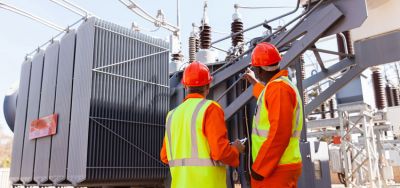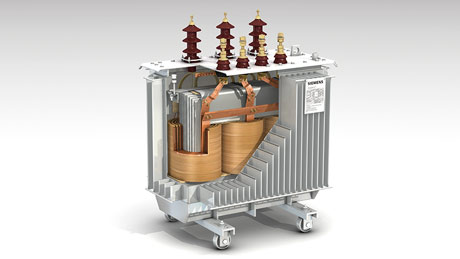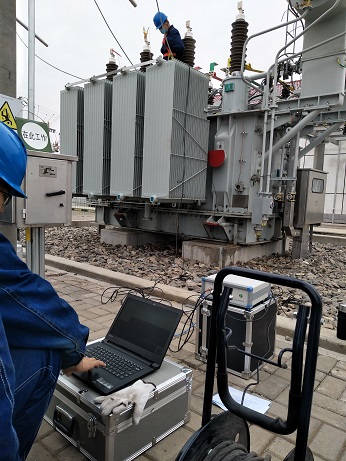Transformer protection method and protection scope
Transformer protection methods generally used
The abnormal working conditions of the transformer mainly include overload, overcurrent caused by external short circuit, neutral point overvoltage caused by external grounding short circuit, oil level reduction caused by oil leakage in the oil tank, or temperature increase caused by cooling system failure, etc. In addition, the large-capacity transformer, due to its high rated working magnetic flux density, is proportional to the voltage-frequency ratio, and may cause over-excitation faults of the transformer when it operates under overvoltage or low frequency. In view of the above situation, large transformers generally adopt the following protection methods:
1. Gas protection: protect the internal short circuit of the transformer and the failure of oil level reduction.
2. Differential protection, current quick-break protection: to protect the phase-to-phase short circuit of each phase of the transformer winding or the lead wire, the ground short circuit of the large ground current system, and the inter-turn short circuit of the winding.
3. Over-current protection: protect the external interphase short circuit, and serve as backup protection for gas protection and differential protection (or current quick-break protection).
4. Zero-sequence current protection: protect the external single-phase grounding short circuit of the large grounding current system.
Five, overload protection: protection of symmetrical overload, only on the signal.
6. Over-excitation protection: The over-excitation of the protection transformer does not exceed the allowable limit.

Transformers generally use protection method 1: gas protection
Transformer gas protection reacts to various faults and oil level reductions inside the transformer tank. Oil-immersed transformers of 0.8MVA and above and oil-immersed transformers of 0.4MVA and above in workshops shall be equipped with gas protection. When the fault in the oil tank produces a slight gas or the oil level drops, the signal should be actuated instantaneously; when a large amount of gas is generated, the circuit breaker on each side of the transformer should be actuated. The pressure regulating device of the oil-immersed transformer with load regulation shall also be equipped with gas protection.
The protection method generally adopted by the transformer 2: longitudinal differential protection or current quick-break protection
Longitudinal differential protection or current quick-break protection to respond to transformer lead wires, bushings and internal short-circuit faults. The protection acts instantaneously to disconnect the circuit breakers on each side of the transformer.
1. For factory transformers below 6.3MVA and transformers running in parallel, as well as factory backup transformers below 10MVA and transformers running independently, when the backup protection time is greater than 0.5s, current quick-break protection should be installed.
2. For 6.3MVA and above factory working transformers and transformers operating in parallel, 10MVA and above factory standby transformers and independent running transformers, and 2MVA and above transformers with current quick-break protection sensitivity that does not meet the requirements, should be installed. Longitudinal differential protection.
3. For transformers with high voltage side voltage of 330kV and above, double longitudinal differential protection can be installed.
4. For the generator-transformer set, when there is a circuit breaker between the generator and the transformer, the generator is equipped with a separate longitudinal differential protection. When there is no circuit breaker between the generator and the transformer, the generator and transformer group of 100MVA and below share the longitudinal differential protection; the generator above 100MVA. In addition to the shared longitudinal differential protection of the generator and transformer, the generator should also be equipped with a separate longitudinal differential protection. For 200~300MVA generator-transformer groups, a separate longitudinal differential protection can also be added to the transformer, that is, double fast protection.
Response to external phase-to-phase short circuit of the transformer and for gas protection and longitudinal differential protection (or current quick-break protection) backup overcurrent protection, overcurrent protection for low voltage starting, overcurrent protection for compound voltage starting, negative sequence current protection and impedance protection, after the protection action, it should act on tripping with a time limit.

Transformer generally used protection method 3:Over-current protection
1. Overcurrent protection should be used for step-down transformers.
2. The overcurrent protection of compound voltage starting is suitable for step-up transformers, system tie transformers and step-down transformers whose overcurrent protection does not meet the sensitivity requirements.
3. Negative sequence current and single-phase low-voltage starting overcurrent protection can be used for 63MVA and above step-up transformers.
4. When the protection of the above 2 and 3 cannot meet the requirements of sensitivity and selectivity, impedance protection can be used.
Transformer commonly used protection method 4: zero sequence current protection
Zero-sequence current protection for external grounding short-circuits of transformers in systems with large grounding currents. In systems with large grounding currents of 110kV and above, if the neutral point of the transformer may be grounded, zero-sequence current protection should be installed for the step-up transformer or step-down transformer of the power supply on both sides or three sides, as a backup protection for the main protection of the transformer, and As backup protection for adjacent elements.
What is zero sequence current protection
A device that uses the zero-sequence current generated when grounding to make the protection act is called zero-sequence current protection. Special zero-sequence current transformers are used on the cable lines to achieve grounding protection. Put the zero-sequence current transformer on the grounded three-core cable, and the current relay is connected to the secondary coil of the transformer. During normal operation or no ground fault, since the vector sum of the three-phase current of the cable is equal to zero, the zero-sequence transformer two The current of the secondary coil is also zero (only a small unbalanced current), so the current relay does not operate. When a ground fault occurs, a large current will appear in the secondary coil of the zero sequence transformer, and the current relay will act to send a signal or remove the fault.

Transformer commonly used protection method 5: overload protection
Overload protection for symmetrical overloads of reactive transformers.
For transformers of 400kVA and above, overload protection should be installed according to the possible overload when the number of transformers is run in parallel or alone and used as a backup power source for other loads. For autotransformers and multi-winding transformers, the protection device should be able to respond to the overload conditions of the common winding and each side. The overload current of the transformer is, in most cases, three-phase symmetrical, so the overload protection only needs to be connected to one-phase current, and the current relay is implemented, and a certain delay is applied to the signal. When choosing which side the protection is to be installed on, consider that it reflects the overloading of the coils on all sides of the transformer. In substations without regular duty personnel, overload protection can act to trip or disconnect part of the load when necessary.
Transformer protection method 6: over-excitation protection
Over-excitation protection for transformer over-excitation.
In the current design of large-scale transformers, in order to save materials, reduce construction costs, and reduce transportation weight, the rated working magnetic flux density of the iron core is designed to be high, about 1.7~1.8 T, which is close to the saturation magnetic density (1.9~2 T), so In the case of overvoltage, it is easy to generate overexcitation. In addition, because the magnetization curve is relatively "hard", during overexcitation, due to the saturation of the iron core, the excitation impedance decreases, and the excitation current increases rapidly. When the working flux density reaches 1.3~1.4 times of the normal flux density, the excitation current can reach the rated current. Level. Secondly, because the excitation current is a non-sinusoidal wave, it contains many high-order harmonic components, and the eddy current loss of the iron core and other metal components is proportional to the square of the frequency, which can cause serious overheating of the iron core, metal components, and insulating materials. High for too long and may damage the transformer. Therefore, the transformer with the high voltage side of 500kV should be equipped with over-excitation protection.
The purpose of installing the transformer over-excitation protection is to detect the over-excitation of the transformer, send a signal or act on the trip in time, so that the over-excitation of the transformer does not exceed the allowable limit and prevent the transformer from being damaged due to over-excitation.
Kingrun Transformer Instrument Co.,Ltd.


More Transformer Testers from Kingrun







